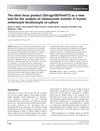Varicella-Zoster Virus in Actively Spreading Segmental Vitiligo Skin
November 2022
in “
The journal of investigative dermatology/Journal of investigative dermatology
”
Varicella-zoster virus VZV segmental vitiligo SV herpes zoster HZ generalized vitiligo nuclear fusion epidermal cells syncytia formation VZV antigens epidermis dermis electron microscopy mature VZV virions melanosome distribution melanosome degradation melanocytes depigmentation autoimmune response chickenpox virus shingles skin depigmentation skin cells skin layers immune system reaction

TLDR The study suggests a link between varicella-zoster virus and segmental vitiligo, with evidence of the virus disrupting skin pigment cells.
The study investigates the presence of Varicella-zoster virus (VZV) in skin samples from 40 patients with segmental vitiligo (SV), 3 with herpes zoster (HZ), and 10 with generalized vitiligo. It found that nuclear fusion in epidermal cells is associated with recent SV, while syncytia formation is linked to long-lasting SV. VZV antigens were detected in the epidermis of recent SV cases and in the dermis of long-lasting SV cases. Electron microscopy revealed mature VZV virions in recent SV samples, and abnormal melanosome distribution and degradation in melanocytes, suggesting that VZV infection may disrupt melanosome trafficking, potentially leading to depigmentation and an autoimmune response.
